11 - question bank PDF

| Title | 11 - question bank |
|---|---|
| Author | Eric Echeandia |
| Course | Molecules and Cells |
| Institution | Boston College |
| Pages | 31 |
| File Size | 338.1 KB |
| File Type | |
| Total Downloads | 74 |
| Total Views | 149 |
Summary
question bank...
Description
Chapter 11--The Basic Principles of Heredity Student: ___________________________________________________________________________ 1. Mendel verified true-breeding pea plants for certain traits before undertaking his experiments. The term "true-breeding" refers to: A. genetically pure lines. B. organisms that have a high rate of reproduction. C. organisms that will produce identical copies of themselves upon reproduction. D. organisms that are heterozygous for a given trait. E. organisms that are homozygous for all possible traits.
2. Mating a true-breeding pink rose plant with a true-breeding pink rose plant will produce: A. plants with pink, red, and white roses. B. only plants with pink roses. C. plants with red or white roses in a 3:1 ratio. D. plants with white or red roses in a 3:1 ratio. E. None of these.
3. The physical appearance of an organism for a given trait is termed: A. genetics. B. dominance. C. synapsis. D. genotype. E. phenotype.
4. The term "dominant" means that: A. both alleles can be expressed in a hybrid. B. all members of the F2 generation of a hybrid cross exhibit the dominant phenotype. C. one allele can mask the expression of another in a hybrid. D. the dominant phenotype shows up in 100% of the offspring in all generations. E. the dominant phenotype is more beneficial than the recessive phenotype.
5. __________ are alternative forms of a gene that govern the same feature, such as eye color, and occupy corresponding positions on homologous chromosomes. A. Alleles B. Loci C. Homozygotes D. Coupled traits E. None of these
6. Mendel's principle of segregation states that: A. alleles from one parent mask the expression of alleles from the other parent. B. alleles separate from each other before forming gametes. C. hybrids will express a phenotype intermediate between the two parental phenotypes. D. true-breeding parents produce offspring of the same phenotype. E. different loci separate from each other.
7. Using standard conventions for naming alleles, which of the following pairs is correct? A. Tt-recessive phenotype. B. TT-heterozygous. C. tt-homozygous. D. tt-dominant phenotype. E. All of these are correct.
8. A pear plant with the genotype Aa can produce gametes containing: A. either A or Aa. B. only the dominant A. C. only the recessive a. D. either A or a. E. either AA, Aa, or aa.
9. The physical location of a particular gene on a chromosome is called: A. an allele. B. a locus. C. a trait. D. a chromatid. E. None of these.
10. Which of the following represents the possible genotype(s) resulting from a cross between an individual homozygous (BB) and one heterozygous (Bb) individual? A. BB and Bb B. BB, Bb, and bb C. BB only D. Bb only E. bb only
11. Which of the following represents the possible genotype(s) resulting from a cross between two individuals that are heterozygous (Bb)? A. BB and Bb B. BB, Bb, and bb C. BB only D. Bb only E. bb only
12. Which of the following represents the possible genotype(s) resulting from a cross between an individual heterozygous (Bb) and one that is homozygous (bb)? A. BB and Bb B. Bb and bb C. BB only D. Bb only E. bb only
13. Mating an individual expressing a dominant phenotype, but whose genotype is unknown, with an individual expressing the corresponding recessive phenotype is an example of: A. a heterozygous cross. B. an F1 cross. C. an F2 cross. D. a parental cross. E. a test cross.
14. The genotype for a pea plant that is homozygous recessive for both height and pea color would be: A. tt. B. YY. C. TtYy. D. ttyy. E. TTYY.
15. In peas, Mendel found that tall plants and yellow peas are dominant. The phenotype for a pea plant with the genotype TTyy would be: A. heterozygous. B. Ty. C. short with yellow peas. D. tall with green peas. E. tall with yellow peas.
16. In peas, Mendel found that tall plants and yellow peas are dominant. The phenotype for a pea plant with the genotype TtYy would be: A. heterozygous. B. Ty. C. short with yellow peas. D. tall with green peas. E. tall with yellow peas.
17. The height of pea plants from a cross between parent plants heterozygous for height, in which tall is dominant, would be: A. all short. B. all tall. C. 1 tall : 3 short. D. 2 short : 2 tall. E. 3 tall : 1 short.
18. Which of the following represents the possible genotype(s) resulting from a cross between an individual homozygous for black hair (BB) and an individual homozygous for blonde hair (bb)? A. BB and Bb B. BB, Bb, and bb C. BB only D. Bb only E. bb only
19. What is the probability that two lizards that are heterozygous for stripes on their tails (Ss) will produce an offspring that is homozygous for no stripes (ss)? A. 1 B. 1/2 C. 1/4 D. 1/8 E. 0
20. In humans, assume that the allele for brown eyes is dominant and the allele for blue eyes is recessive. If two brown-eyed individuals have a child with blue eyes, that means: A. both parents are homozygous for brown eyes. B. both parents are heterozygous for eye color. C. there is a 1/4 chance that their second child will have brown eyes. D. there is a 50/50 chance that their second child will have blue eyes. E. there is a 3/4 chance that their second child will have blue eyes
21. If a couple is planning on having two children, what is the probability that both will be male? A. 0 B. 1/4 C. 1/2 D. 3/4 E. 1
22. If a couple is planning on having three children, what is the probability that only one will be male? A. 0 B. 1/4 C. 3/8 D. 1/2 E. 3/4
23. A brown-eyed couple already has a child with blue eyes. What is the probability that their next child will have blue eyes, assuming that the brown eye allele is dominant and the blue eye allele is recessive? A. 0 B. 1/4 C. 1/2 D. 3/4 E. 1
24. A couple has already had 3 girls with cystic fibrosis, and were hoping to have a normal child for their fourth. What are the chances that the fourth child will be a normal male? A. 0 B. 1/8 C. 1/4 D. 3/8 E. 1/2
25. A brown-eyed couple heterozygous for eye color are planning on having two children. What is the probability that both children will have blue eyes, assuming brown eyes is dominant and blue eyes is recessive? A. 0 B. 1/32 C. 1/16 D. 1/4 E. 1/2
26. Two Martians fall in love and marry. One Martian is homozygous for red eyes and the other is heterozygous. The recessive eye color is purple. What is the probability that they will have a child with purple eyes? A. 1/1 B. 1/2 C. 1/4 D. 3/4 E. 0
27. Two Martians fall in love and marry. One Martian is homozygous for red eyes and the other is heterozygous. The recessive eye color is purple. What are the chances that the alien couple will have a child with red eyes? A. 1 B. 1/2 C. 1/4 D. 3/4 E. 0
28. Two Martians fall in love and marry. One Martian is homozygous for red eyes and the other is heterozygous. The recessive eye color is purple. What is the probability that the alien couple will have a child that is heterozygous for eye color? A. 1 B. 1/2 C. 1/4 D. 3/4 E. 0
29. The principle of independent assortment is not true for: A. incomplete dominance. B. mutations. C. heterozygotes. D. homozygotes. E. linked genes.
30. Genes that tend to be inherited together are said to be: A. associated. B. related. C. similar. D. linked. E. alleles.
31. A __________ is best used to demonstrate the linkage of two genes. A. monohybrid cross B. dihybrid cross C. monohybrid test cross D. two-allele test cross E. two-point test cross
32. An organism with the genotype of AaXx can produce gametes containing __________ if the two genes are unlinked. A. either Aa or Xx B. either AX, Ax, aX, ax C. AaXx D. AX or ax E. A,a,X,x
33. The offspring of two heterozygous gray-bodied, normal-winged flies should be 50% gray-bodied/normal wings (BbRr) and 50% black-bodied/vestigial wings (bbrr) because these alleles are linked. If a small number, say 15%, of the offspring are instead blackbodied with normal wings, this is most likely the result of: A. crossing-over. B. incomplete dominance. C. codominance. D. an error in meiosis. E. mutation.
34. The probability that two genes will be separated by crossing-over is related to: A. the phenotype that they control. B. how far the two genes are from the centromere. C. the distance between the two genes on the chromosome. D. whether the two genes are located on a sex chromosome. E. how far the genes are from the kinetochore.
35. In a two-point test cross, 36 of the offspring were recombinant types. The remaining 64 offspring were parental types. How many map units separate the two loci? A. 28 B. 36 C. 64 D. 78 E. 100
36. A lizard with a striped tail is crossed with one having a spotted head, producing normal looking (no stripes or spots) lizard progeny. What progeny would be expected to be produced by mating these progeny with each other, if the genes conferring stripes and spots were on different chromosomes? A. equal numbers of normal, striped, spotted and striped, and spotted B. 3 striped : 1 spotted C. 9 striped and spotted : 3 spotted : 3 striped : 1 normal D. 9 striped : 3 spotted : 1 striped or spotted E. 9 normal : 3 striped : 3 spotted : 1 striped and spotted
37. A lizard with striped tails is crossed with one having a spotted head, producing normal looking (no stripes or spots) progeny. What progeny would be expected to be produced by mating one of these lizards with another that had a striped tail and spotted head, if the genes conferring stripes and spots were close together on the same chromosome? A. equal numbers of normal, striped, spotted and striped, and spotted B. 3 striped : 1 spotted C. mostly progeny that are striped or spotted D. mostly progeny that are normal or striped and spotted E. 9 normal : 3 striped : 3 spotted : 1 striped and spotted
38. In genetics, map units express the distance between: A. chromosomes during metaphase. B. two loci on a chromosome. C. alleles. D. polar bodies. E. homologous chromosomes.
39. The sex of most mammals, birds, and insects is determined by: A. the temperature. B. the external environment. C. sex chromosomes. D. chance. E. the internal envronment.
40. The sex of a human is determined by: A. the number of chromosomes. B. the number of autosomes. C. the presence of only one X chromosome. D. the number of sex chromosomes. E. the presence of a Y chromosome.
41. Why is color-blindness more common in males than in females? A. Because females would have to receive one copy of the recessive color blindness gene to actually express the trait. B. Because a male only needs to receive the recessive gene from his mother to be colorblind. C. Because color-blindness is an Y-linked trait. D. Females are hemizygous E. Males are never hemizygous
42. What are the possible genotypes of a female child from the union of a woman who is heterozygous for hemophilia and a man who has normal blood clotting characteristics? A. XHXH or XHXh B. XHXh C. XHYH D. Hh E. HH
43. What are the predicted phenotypes of the male children from the union of a woman who is heterozygous for hemophilia and a man who has normal blood clotting characteristics? (Use the Punnett square to verify your answer.)
A. all normal B. 3 normal : 1 hemophilia C. 1 hemophilia : 1 normal D. 1 hemophilia : 3 normal E. all hemophiliacs 44. What are the predicted phenotypes of the female children from the union of a woman who is heterozygous for hemophilia and a man who has normal blood clotting characteristics? (Use the Punnett square to verify your answer.)
A. all carriers B. 3 homozygous normal : 1 carrier C. 1 homozygous normal : 1 carrier D. 1 hemophilia: 2 homozygous; normal : 1 carrier E. all hemophiliacs 45. A Barr body in a mammalian female cell represents: A. an inactivated oocyte. B. a polar body. C. a degenerate nucleus. D. an inactivated X chromosome. E. an inactivated Y chromosome.
46. Calico cats are never male because: A. recessive genes are not usually expressed on their X chromosome. B. male hormones prevent expression of the calico phenotype. C. two different X chromosomes are needed for the expression of the calico phenotype. D. two different Y chromosomes are needed for the expression of the calico phenotype. E. one X chromosome and one Y chromosome are needed for the expression of the calico phenotype.
47. When certain medium height hybrid plants were crossed, they produced offspring that were dwarf, medium, and tall in a ratio of 1 : 2 : 1. This is an example of: A. variegation. B. hybrid vigor. C. incomplete dominance. D. epistasis. E. a polygenic trait.
48. What are the possible phenotypes of the children if the mother has Type A blood and the father has type AB blood? (Use the Punnett square to verify your answer.)
A. all AB B. A, B C. A, AB D. A, B, AB E. A, B, O 49. What are the possible phenotypes of the children if the mother's genotype is IAi for blood type and the father is IBi? (Use the Punnett square to verify your answer.)
A. all AB B. A, B C. A, AB D. A, B, O E. A, B, AB, O 50. A diploid individual has a maximum of __________ different alleles for a particular locus. A. one B. two C. three D. four E. more than four
51. A particular gene that controls seed coat color in peas also determines the susceptibility of these peas to a particular disease. This situation is referred to as: A. varigation. B. additive dominance. C. codominance. D. pleiotropy. E. incomplete dominance.
52. Breeding a yellow dog with a brown dog produced puppies with both yellow and brown hairs intermixed. This is an example of: A. variegation. B. codominance. C. incomplete dominance. D. epistasis. E. a polygenic trait.
53. A gene that affects, prevents, or masks the expression of a gene at another locus is a(n) __________ gene. A. recessive B. dominant C. epistatic D. codominant E. plieotropic
54. __________ refers to multiple independent pairs of genes having similar and additive effects on the same characteristic. A. Codominance B. Epistasis C. Polygenic inheritance D. Complete dominance E. Additive dominance
55. The range of phenotypic possibilities that can develop from a certain dog genotype under different environmental conditions is called the: A. epistatic interaction. B. norm of reaction. C. nurture limit. D. genotype range. E. maximum phenotype.
56. Compare and contrast the following pairs of related terms: gene and allele, genotype and phenotype, homozygous and heterozygous.
57. What is an X-linked inheritance pattern? Use a specific example to explain the role of the father and mother in this unique inheritance pattern and note the differential impact on male and female offspring.
58. What is dosage compensation with respect to the sex chromosomes, and how is this accomplished in humans?
59. A female black cat mated with an albino male and gave birth to 6 black kittens. When the albino male was mated with a different female black cat, 3 black cats and 2 albino cats were produced. How can you explain this genetic situation? Write genotypes for all three parental cats and offspring.
60. Suppose that the allele for brown eyes (B) is dominant to the allele for hazel eyes (b). If both parents have brown eyes and are heterozygous (Bb), what are the chances that their first child will have hazel eyes? Brown eyes? What are the chances that if they have two children, both will have hazel eyes?
61. The mating of totally unrelated homozygous strains of corn produced a new strain of corn that was very different from both parental strains in many characteristics. Give some reasons to explain this phenomenon.
62. Dominant traitsremove recessive traits when both are present in the same individual. True
False
63. Dominance is not consistent with blending inheritance. True
False
64. Mendel’s paired factors unite during the formation of reproductive cells. True
False
65. Each unduplicated chromosome consists of two DNA molecule(s). True
False
66. The existence of of a particular locus can only be inferred if there are no allelic variants at that locus. True
False
67. In a Punnet square, the type of gametes and their expected frequencies from one parent are listed across the top and those from the other parent are listed across the left side. True
False
68. Examination of a phenotype can always determine the genotype of an organism. True
False
69. A testcross determines phenotype. True
False
70. Independent assortment occurs between two pairs of homologous chromosomes that can be arranged in four different ways at metaphase of meiosis. True
False
71. To determine the probability that two parents who are Bb will a first child that is Bb, use the product rule. True
False
72. 1. The presence of certain alleles at one locus can prevent or mask the expression of alleles at different locus 2. The offspring exhibit a continuous variation in phenotype 3. One defective enzyme may affect function of many cells 4. The heterozygote has a phenotype intermediate between those of two parents 5. The heterozygote expresses the phenotypes of both types of homozygotes.
pleiotropy ____ epistasis ____ polygenic ____ incomplet e ____ codomina nce ____
Chapter 11--The Basic Principles of Heredity Key
1. Mendel verified true-breeding pea plants for certain traits before undertaking his experiments. The term "true-breeding" refers to: A. genetically pure lines. B. organisms that have a high rate of reproduction. C. organisms that will produce identical copies of themselves upon reproduction. D. organisms that are heterozygous for a given trait. E. organisms that are homozygous for all possible traits.
2. Mating a true-breeding pink rose plant with a true-breeding pink rose plant will produce: A. plants with pink, red, and white roses. B. only plants with pink roses. C. plants with red or white roses in a 3:1 ratio. D. plants with white or red roses in a 3:1 ratio. E. None of these.
3. The physical appearance of an organism for a given trait is termed: A. genetics. B. dominance. C. synapsis. D. genotype. E. phenotype.
4. The term "dominant" means that: A. both alleles can be expressed in a hybrid. B. all members of the F2 generation of a hybrid cross exhibit the dominant phenotype. C. one allele can mask the expression of another in a hybrid. D. the dominant phenotype shows up in 100% of the offspring in all generations. E. the dominant phenotype is more beneficial than the recessive phenotype.
5. __________ are alternative forms of a gene that govern the same feature, such as eye color, and occupy corresponding positions on homologous chromosomes. A. Alleles B. Loci C. Homozygotes D. Coupled traits E. None of these
6. Mendel's principle of segregation states that: A. alleles from one parent mask the expression of alleles from the other parent. B. alleles separate from each other before forming gametes. C. hybrids will express a phenotype intermediate between the two parental phenotypes. D. true-breeding parents produce offspring of the same phenotype. E. different loci separate from each other.
7. Using standard conventions for naming alleles, which of the following pairs is correct? A. Tt-recessive phenotype. B. TT-heterozygous. C. tt-homozygous. D. tt-dominant phenotype. E. All of these are correct.
8. A pear plant with the genotype Aa can produce gametes containing: A. either A or Aa. B. only the dominant A. C. only the recessive a. D. either A or a. E. either AA, Aa, or aa.
9. ...
Similar Free PDFs

11. Autocad question bank
- 14 Pages

11 - question bank
- 31 Pages

Dmdw-question bank - question bank
- 17 Pages

Question bank
- 8 Pages
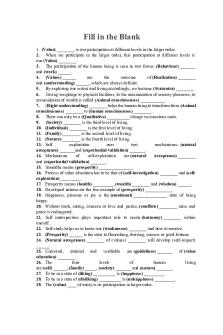
Question Bank 3question bank
- 6 Pages

Question BANK
- 19 Pages
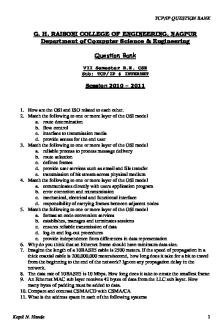
Tcp-ip-question-bank
- 25 Pages

Chapter 4 - Question Bank
- 28 Pages

DIP Question Bank Sheetal
- 14 Pages
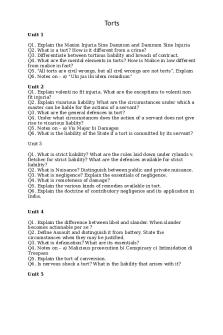
Torts Question Bank
- 2 Pages
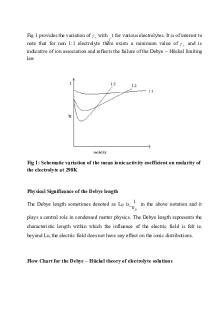
QB5 - Question Bank 5
- 104 Pages

Assessment Question Bank 1
- 22 Pages
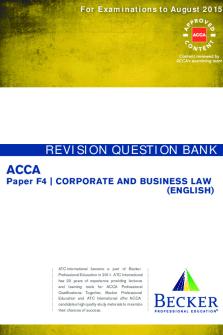
Revision Question Bank 60
- 154 Pages
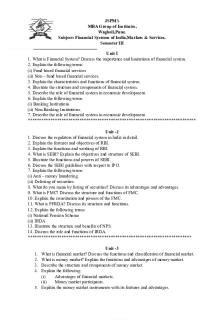
Fsims Question Bank
- 4 Pages
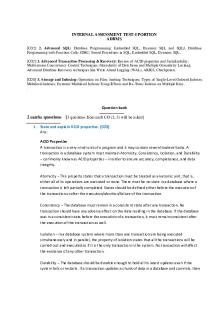
Question bank Adbms - solution
- 45 Pages

Viva Question Bank - CSS
- 17 Pages
Popular Institutions
- Tinajero National High School - Annex
- Politeknik Caltex Riau
- Yokohama City University
- SGT University
- University of Al-Qadisiyah
- Divine Word College of Vigan
- Techniek College Rotterdam
- Universidade de Santiago
- Universiti Teknologi MARA Cawangan Johor Kampus Pasir Gudang
- Poltekkes Kemenkes Yogyakarta
- Baguio City National High School
- Colegio san marcos
- preparatoria uno
- Centro de Bachillerato Tecnológico Industrial y de Servicios No. 107
- Dalian Maritime University
- Quang Trung Secondary School
- Colegio Tecnológico en Informática
- Corporación Regional de Educación Superior
- Grupo CEDVA
- Dar Al Uloom University
- Centro de Estudios Preuniversitarios de la Universidad Nacional de Ingeniería
- 上智大学
- Aakash International School, Nuna Majara
- San Felipe Neri Catholic School
- Kang Chiao International School - New Taipei City
- Misamis Occidental National High School
- Institución Educativa Escuela Normal Juan Ladrilleros
- Kolehiyo ng Pantukan
- Batanes State College
- Instituto Continental
- Sekolah Menengah Kejuruan Kesehatan Kaltara (Tarakan)
- Colegio de La Inmaculada Concepcion - Cebu